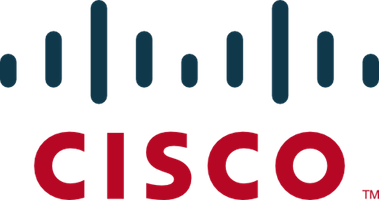ACM SIGCOMM 2021 Workshop on Flexible Networks (FlexNets'21): Artificial Intelligence Supported Network Flexibility and Agility
The workshop has an associated Slack channel for discussions. Click on the link below to visit it. If you're asked to sign in, please use this link.
Go to workshop Slack channelWorkshop program
Go to FlexNets'21 workshop programCall for Papers
(Click here to download the PDF version)
As the next generation communication systems beyond 5G, such as 6G, are expected to address a wider range of services and applications with a wider range of dynamic environmental and service-specific requirements, these systems evolve towards an architecture supported by enhanced capabilities to adapt to such flexible environments and connectivity needs. Envisioned 6G systems are expected to see a further increase of applications with stricter and heterogeneous requirements, be adaptive to connectivity requirements through dynamic topologies, and take autonomous decisions to reconfigure the networks for efficiency and resiliency purposes. Flexible and agile networking solutions are required to deal with uncertainties and dynamic parameters. As the number of QoS-demanding applications increases, the capability of end-to-end holistic network transformation is required triggered by the dynamicity and mobility of users and their service demands as well as the radio and resource topology. The complexity introduced by these flexible characteristics needs to be addressed with more adaptive network resource sharing mechanisms among users and applications. This includes the adaptation to individual QoE/QoS needs and the dynamics of the applications and services, starting from access networks to core networks.
Ability to process the big data generated by the network, derive necessary feedbacks from the network and AI-assisted cognitive network management are key enablers for elasticity and adaptiveness to network dynamics such as topology changes due to the mobility of the end users, base stations and rearrangement of network resources (either physical or virtual network functions). A distributed, self-*, AI-assisted and deeply programmable/reconfigurable end-to-end network architecture is required to address such network dynamics.
Topics of Interest
- All aspects of cognitive, flexible, dynamic, agile network architectures
- Autonomous management of such networks, (real-time) zero-touch management
- Autonomous network function allocation and placement
- AI-assisted deeply-programmable networks, programmable data planes and nodes
- Edge assistance and device-edge-cloud collaboration for elasticity, edge-AI networks
- Distributed computing environments, hyper-distributed applications, integration of computing, connectivity, IoT, AI
- Architectures for collaborative smart nodes with decentralised intelligence, federated machine learning in 6G
- Microservice-based flexible architectures, network management, service orchestration
- Open interfaces and open source solutions for smart networks
- Virtual radio access technologies, programmable RAN, RANaaS
- Energy-oriented network management, ultra-low-energy 6G networks
- Multi-context awareness, dynamic multi-service and multi-tenancy and network slicing
- Flexible backhauling/fronthauling, Integrated access/backhaul (IAB), multi-hop mesh backhauling
- Runtime flexibility in services and applications, application-driven optimization
- Drone-assisted agile networks, base stations on wheels or wings
- Flexible and software-defined security, physical-layer security
- Flexible and rapid deployment for automated and smart services
- Private Beyond 5G Networks: Solutions to simplify the lifecycle, deployment, and operation
All in all, future networks must be flexible and elastic to easily introduce new services, applications and business models. Any topic related to this concept is welcome
Social Media and Web Pages
https://flexnets.ceng.metu.edu.tr
Submission Instructions
Submissions must be original, unpublished work, and not under consideration at another conference or journal. Submitted papers must be at most six (6) pages long, including all figures, tables, references, and appendices in two-column 10pt ACM format. Papers must include author names and affiliations for single-blind peer reviewing by the program committee. Authors of accepted submissions are expected to present and discuss their work at the workshop.
Please submit your paper via https://flexnets21.hotcrp.com.
Keynote and Cadence Talks
Keynote Talk by Gunnar Mildh, Ericsson Research, Sweden
Cadence Talk by David M. Gutierrez Estevez, Samsung Electronics R&D Institute, UK
Important Dates
-
May 21May 30, 2021Submission deadline
-
June 21, 2021
Acceptance notification
-
July 2, 2021
Camera-ready deadline
-
August 23, 2021
Workshop day
Committee
- General Chairs
-
Raouf Boutaba
University of Waterloo, Canada
-
Yunus Dönmez
Ericsson Research, Turkey
- Technical Program Committee Chairs
-
Ilker Demirkol
Universitat Politècnica de Catalunya, Spain
-
Ertan Onur
METU, Turkey
- Advisory Board
-
Prof. Dr. Rui Aguiar
Campus Universitário de Aveiro, Portugal
-
Prof. Dr. Cem Ersoy
Boğaziçi University, Turkey
-
Prof. Dr. Erol Gelenbe
Imperial College, UK
-
Prof. Dr. Halim Yanıkömeroğlu
Carleton University, Canada
- Program Committee
-
Alberto Perotti
Huawei, Sweden
-
Ali Özgür Yılmaz
Anketek, METU, Turkey
-
Aziz Can Yücetürk
Vodafone, Turkey
-
Burkhard Stiller
University of Zurich, Switzerland
-
Chrysa Papagianni
University of Amsterdam, The Netherlands
-
Elena Lopez
Univesitat Politecnica de Catalunya, Spain
-
Klaus Moessner
University of Surrey, United Kingdom
-
Laurent Clavier
IMT Lille Douai, France
-
Marcelo Carvalho
University of Brasília, Brazil
-
Marco Fiore
IMDEA Networks Institute, Spain
-
Massimo Condoluci
Ericsson Research, Sweden
-
Panagiotis Demestichas
University of Piraeus, Greece
-
Panagiotis Vlacheas
WINGS ICT Solutions, Greece
-
Quentin De Coninck
UCLouvain, Belgium
-
Samir Das
Stony Brook University, SUNY, USA
-
Vasilis Maglaris
National Technical University of Athens (NTUA), Greece










